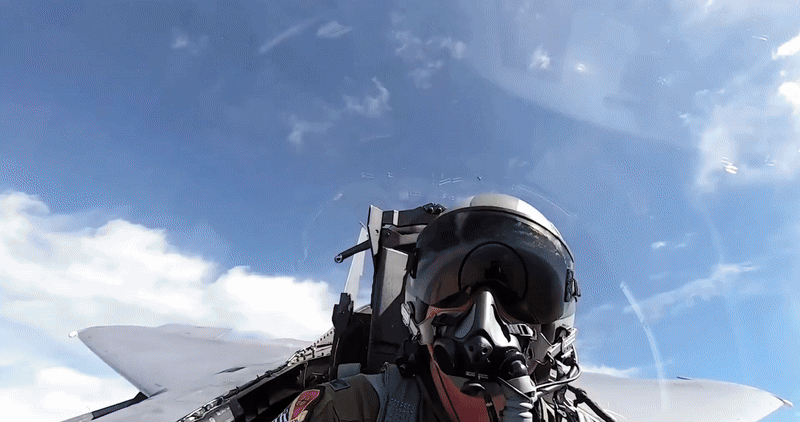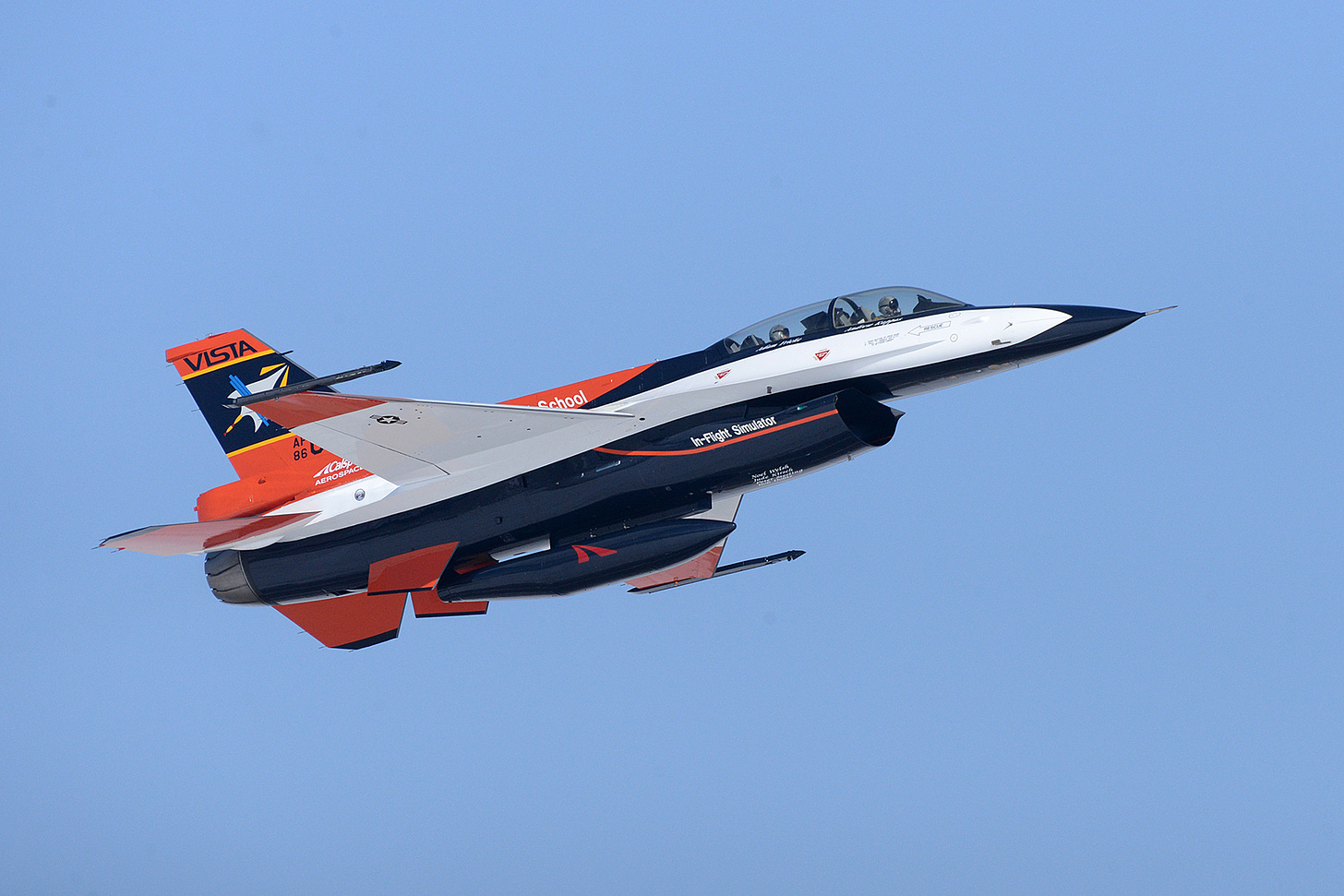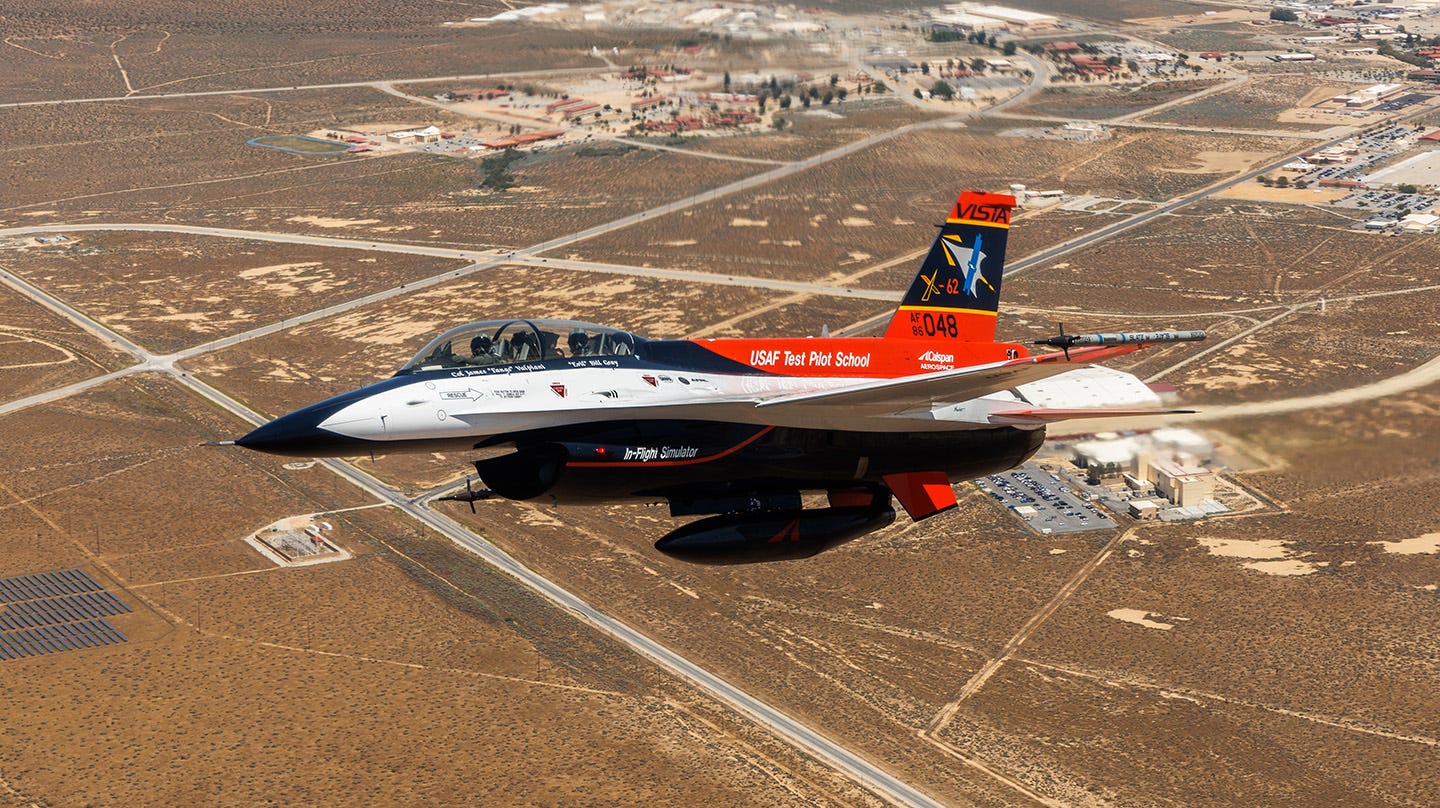The Aircraft Leading The Way for AI-Enabled Aircraft (CCA) Development
We look at the X-62A Vista, the testbed aircraft that performed the first Dogfight between an AI-piloted aircraft and a Human-piloted aircraft
The Engineer's Perspective is a reader-supported publication. Sign and up and subscribe to see more in-depth Aerospace/Aeronautical Analysis!
Table of Contents:
Introduction
Overview
Historical Development
Specifications
Concept of Operations
Systems Engineering
Implications and Future Considerations
Conclusion
References
Introduction
The X-62 VISTA (Variable In-flight Simulation Test Aircraft) is a testbed for artificial intelligence (AI) integration in air combat scenarios. Originally based on the F-16 Fighting Falcon, this unique aircraft has undergone extensive modifications over the past three decades to become one of the world's premier flying laboratories for autonomous and AI-driven flight systems.
At the heart of the X-62 VISTA's latest capabilities is its advanced AI integration, which enables real-time tactical decision-making during simulated combat engagements. Recent breakthroughs with Artificial Intelligence integration have showcased the X-62 VISTA's potential to revolutionize air combat. In April 2024, it successfully engaged in the first-ever human vs. artificial intelligence dogfight against a conventional, human-piloted F-16. This milestone, along with its ability to conduct extended autonomous flights, underscores the aircraft's pivotal role in shaping the future of military aviation and autonomous combat systems.
Overview
The X-62 VISTA's current role as a testbed for AI integration in tactical air combat has yielded remarkable results, pushing the boundaries of autonomous flight and simulated aerial engagements. The aircraft's capabilities have been significantly enhanced through recent upgrades and developments:
The X-62 VISTA's advanced systems enable it to simulate complex dogfight scenarios, allowing for the testing and refinement of AI-driven combat tactics. These simulations are made possible by the aircraft's unique features:
VISTA Simulation System (VSS): This system allows the X-62 to mimic the flight characteristics of various aircraft types, from agile fighters to large bombers.
Model Following Algorithm (MFA): Developed by Lockheed Martin, this algorithm enhances the aircraft's ability to accurately replicate different flight models.
System for Autonomous Control of the Simulation (SACS): This system integrates with the MFA to enable advanced autonomous behaviors and AI-driven decision-making during simulated combat engagements.
The SACS system is the capability for which the X-62 is contributing to Aerospace and Defense now, for in December 2023, the X-62 VISTA achieved a groundbreaking milestone when an AI agent successfully piloted the aircraft for over 17 hours. This extended autonomous flight represented the first time an AI had been engaged on a tactical aircraft for such a duration, demonstrating the potential for long-endurance missions without human intervention.
The X-62 VISTA's open systems architecture facilitates rapid integration of new technologies and software updates, allowing researchers to quickly iterate and test cutting-edge AI techniques. This flexibility is crucial for accelerating the development of autonomous air combat capabilities to meet urgent national security needs.
Historical Development
The X-62 VISTA's historical development spans over three decades, showcasing a remarkable evolution from a modified F-16 to a cutting-edge AI testbed:
1990s: The aircraft began its journey as an NF-16D, initially focusing on multi-axis thrust vectoring technology. This early version incorporated a multi-axis thrust vectoring engine nozzle, enabling enhanced control in post-stall situations and granting the aircraft supermaneuverability.
2000s: The aircraft, then known as the NF-16D VISTA, continued to serve as a versatile testbed. It was used to develop key technologies such as Direct Voice Input and the "Virtual HUD," which were later incorporated into the F-35 Lightning II cockpit design.
2010s: The aircraft underwent further modifications and upgrades, expanding its capabilities as a flying laboratory. It was extensively used by the U.S. Air Force Test Pilot School for student curriculum sorties, special academic projects, and flight research.
2021: A significant milestone was reached when the aircraft was redesignated as the X-62A VISTA in June. This change reflected its new role in the U.S. Air Force Skyborg program, focusing on developing autonomous combat air vehicles.
2023: In February, the X-62A achieved a groundbreaking feat when an AI agent flew the aircraft for more than 17 hours, marking the first time AI engaged on a tactical aircraft.
2024: The X-62A participated in the first-ever human vs. artificial intelligence dogfight against a conventional, human-piloted F-16 on April 18.
Throughout its development, the X-62 VISTA has incorporated several advanced systems:
VISTA Simulation System (VSS): Developed by Calspan, this system allows the aircraft to mimic the flight characteristics of various aircraft types.
Model Following Algorithm (MFA): Created by Lockheed Martin, this algorithm enhances the aircraft's ability to replicate different flight models.
System for Autonomous Control of the Simulation (SACS): This system integrates with the MFA to enable advanced autonomous behaviors and AI-driven decision-making.
Enterprise-wide Open Systems Architecture (E-OSA): Developed by Skunk Works, this powers the Enterprise Mission Computer version 2 (EMC2) or "Einstein Box".
The X-62 VISTA's open systems architecture allows for rapid integration of new technologies and software updates, making it an invaluable asset for testing cutting-edge AI techniques alongside new uncrewed vehicle designs. This flexibility has been crucial in accelerating the development of autonomous air combat capabilities to meet urgent national security needs.
As of 2025, the X-62 VISTA continues to play a vital role in shaping the future of air combat, serving as a testbed for AI and autonomy development. Its unique capabilities make it an essential tool in the U.S. Air Force's efforts to develop an AI-enabled fleet of more than 1,000 unmanned aircraft, with the first expected to be operational by 2028.
Specifications
Keep reading with a 7-day free trial
Subscribe to The Engineer's Perspective to keep reading this post and get 7 days of free access to the full post archives.



